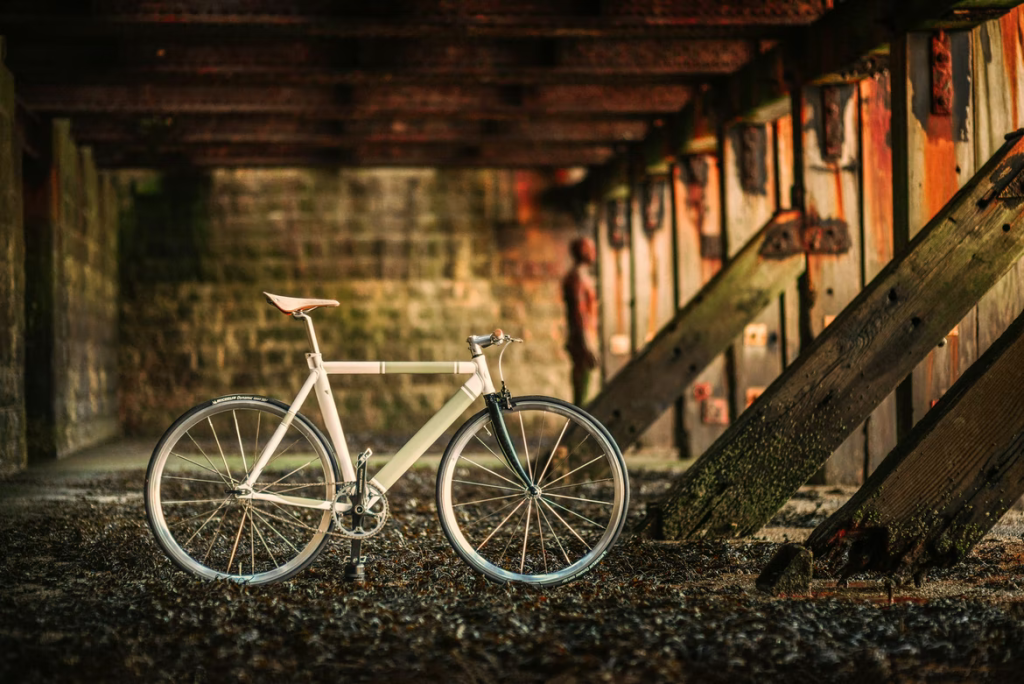Adventure Bike vs. Gravel Bike: Which Is Which?
Every type of bicycle is a modified and more specialized version of another. For example, adventure bikes and gravel bikes are two types of bikes coined similar to one another. Their main difference is that adventure bikes are more like specialized mountain bikes. While gravel bikes are considered specialized road bikes.
Both adventure and gravel bikes are designed to be versatile and comfortable regardless of the surface. They are built to endure dirt roads, muddy trails, uphill rides, and complicated terrains. Both are made to be adaptable to different environmental conditions. In totality, these bikes can withstand a lot of situations without compromising your comfort as a biker.
Although adventure and gravel bikes seem so similar, they have some differences. Adventure bikes are specialized for long rides and nature tours. While gravel bikes are specialized for being durable on bridle paths and roads.
Table of Contents
Similarities of Adventure and Gravel Bikes
Adventure and gravel bikes have a lot of similarities when it comes to their individual components. One of them is having a lightweight frameset. They are both made from aluminum, titanium, and carbon fiber. These are light materials that offer longevity and durability. These materials are also robust in absorbing shocks, which helps ensure that the bike can endure road impacts.
Another good similarity is that they both use disc brakes. Adventure bikes and gravel bikes are exposed to extreme and changing weather. Wet conditions can affect a bicycle’s braking power, especially when using brake pads and rim brakes. When using coaster brakes, muddy conditions can hinder your control over the braking power of your bike. Using disc brakes allows adventure and gravel bikes to better control your stopping power without damaging the bike.
Both the adventure and gravel bikes have wide tire clearance. Tire clearance is the distance from the tires to the object it is measured from. Having wider tire clearance means that your bike can handle larger tires.
Adventure and gravel bikes have enough clearance to load a 45mm. up to 55mm. tires. Road bikes and mountain bikes have 23mm. tires to 35mm. tires. Wider tires indicate that they have more surface grip on bumpy surfaces. This contributes to the bike’s versatility.
Some bikes cannot take too many loads because it can affect your speed and control over them. If you need to carry a lot of stuff on the road, adventure and gravel bikes can help. They are both engineered to manage multiple mounts. Both are also capable of accessories installation such as mudguards, luggage racks, and panniers.

Differences of Adventure and Gravel Bikes
Adventure bikes and gravel bikes, although almost identical, have several differences. One of them is their wheel compatibility. A gravel bike is compatible with both 700c and 650b wheels. On the other hand, an adventure bike is compatible with 700c wheels only. Gravel bikes give you the option to be more flexible with your choice of wheels.
Adventure bikes are almost always recommended to have a lower-speed gear system. Adventure bikes use seven to nine-speed gears. The gear system is very flexible with gravel bikes, from 7-speed to 13-speed gear. This is because adventure bikes are often used more on mountainous tracks.
In this type of terrain, it is advised to have lower gears to maneuver better as you ascend. Gravel bikes offer speed while being versatile. This is why it is built to have more speed gears to deliver better pacing.
Adventure bikes use triple chainrings, while gravel bikes use single or double chainrings. Triple chainring allows adventure bikes to carry more weight. This is especially helpful if you are not a strong cyclist. Moreover, adventure bikes are often used on uphill rides more than gravel bikes. Triple chainring offers extreme climbing power.
Lastly, adventure bikes use either straight handlebars or drop bars, while gravel bikes typically use flared drop bars. This has something to do with aerodynamics and better riding position. Adventure bikes use straight handlebars or traditional drop bars. This is to provide better posture, mainly uphill. Gravel bikes are designed to have flared drop bars to maximize your speed amplification on the road. Flared drop bars make you more aerodynamic, therefore, making you faster.
What Makes an Adventure Bike?
An adventure bike is considered a modern empowered bicycle that allows you to cruise on challenging trails. They are specialized to endure rough surfaces without getting out of control. They are known for being lightweight, sturdy, and energy-preserving.
Adventure bikes have larger dimensions compared to other modern bike types for adventure rides. This is because of its longer travel suspension and more prominent front wheel, which offers a generous clearance. Because of its triple chainring, adventure bikes give more uphill power with more minor component damage.

What Are Adventure Bikes Good for?
Adventure bikes are best used if you have a long road trip while in nature. Suppose you want to enjoy the view while pedaling. In that case, you can count on adventure bikes to give you an exhilarating experience. If you have a lot to pack for your trip, adventure bikes can also help.
They are engineered to help you with your load even when climbing mountains. Its chainring system will give you a significant amount of power to let you climb up terrains that even mountain bikes may find challenging to do.
Adventure Bikes: The Pros
There are a lot of reasons why people choose to own adventure bikes. It has become more popular in the past years because of its unique qualities as a modern bike. Below are some reasons why more are getting hyped with adventure bikes.
1. Stability
The frameset of adventure bikes is made from sturdy materials proven to endure impacts. They are carefully pieced together to ensure that you will have a stable ride even on the most jagged surface. Furthermore, the materials used for adventure bikes can absorb more vibrations from the road. This enables you to ride straight and steadily all the time.
2. Better Riding Position
Today, modern bikes are built to plunge you forward for better pacing and break the pressure in front of you. While that might be true, adventure bikes offer a more upright position. The bike’s geometric design makes you capable of safely riding through nature trails without compromising the bike’s health.
3. Great Stopping Power
Adventure bikes make use of disc brakes. Disc brakes provide the best and most consistent braking power of all modern braking systems available for bikes. Furthermore, they react in real-time to your triggers. With the gravel bike’s powerful brake system, you are assured that you will have safer pacing.
Adventure Bikes: The Cons
Before investing in an adventure bike, you should also consider its disadvantages. Even if you think it has a lot of perks, knowing its limitations as a bike is a must. Below are some of the weak points of an adventure bike.
1. Not as Agile as Mountain Bikes
Adventure bikes are built to be all-terrain bikes. Although flexible, it is not the best when it comes to agility. They are built to be more firm on rough roads. When on smooth surfaces, they stay firm and sometimes become stiff. This stiffness lessens the responsiveness of the bike when turning.
2. More Maintenance
The triple chainring of adventure bikes requires more maintenance. The triple chainring is similar to a double chainring but bolted with an added smaller chainring. Having a more complicated chainring means it is more prone to be faulty. Repair and replacement of triple chainring sets are far more demanding.
3. Lower Gearing
Adventure bikes have lower speed gear capacity. Although it allows more chainring than gravel bikes, it has fewer speed gears. This is because it is specialized to give you power rather than speed, mainly uphill. You have more control of your bike’s traction when ascending with lower-speed gear.
What Makes a Gravel Bike?

A gravel bike is known for its unique geometric build that contributes to its durability on terrains. It has a longer wheelbase, lower bottom bracket, and flared drop bars that helps in more stable off-road rides. Furthermore, gravel bikes are focused on giving you speed while giving you better riding posture.
Gravel bikes are highly adaptable. They can be modified so they can easily adjust to your needs. You can increase the speed gear and chainring from single to double for better speed. For more surface grip, you can increase your wheel width and lower the pressure of your tires. It is the all-in-one modern bike made for people who just love the thrill.
What Are Gravel Bikes Good for?
Gravel bikes are designed to cover what road bikes, mountain bikes, and cyclocross bikes can do. It is built to perform on flat and harsh surfaces. It also makes you more aerodynamic on your rides. Moreover, it is created to live up to your speed requirements while ensuring cozy with your maneuvers.
If you are a technical biker, you will find gravel bikes a fantastic tool to fulfill your complicated rides. It also caters to those who constantly change their track from smooth to tarmac to gravel roads. They are backed up with different speed gears, allowing you to personalize your riding experience based on what suits you best.
Gravel Bikes: The Pros
Gravel bikes are one of the latest hybrid bikes today. They have become more welcomed in bikes because of their high versatility. In fact, many people engaged in thrill biking choose gravel bikes over customized road or mountain bikes. Here are some of the reasons why gravel bikes have become popular.
1. All-In-One
Having a gravel bike is like having a lot of bikes in one. It competes with the speed of road bikes on paved surfaces. It overpowers mountain bikes in terms of climbing capability. And what’s best is that it is more versatile on the road than most modern bikes today.
2. More Control even with a lot of Loads
Gravel bikes are made to have the right amount of stiffness. This ensures that it will not sway on tracks when it carries more load. Gravel bike tires usually have low pressure to ensure that impacts and bumps will be absorbed well. This nullifies the bouncing motion that a bike is supposed to do if it hits an obstacle.
3. Adjustability
Being able to adapt to changes is a plus factor for gravel bikes. Its frame set suits different tire sizes, from narrow to wide ones. This will allow you to choose the best tires for the particular trip you will have. It is also amenable for gear change since it can load different speed gears. With this, you will adjust your speed progression and road grip.
Gravel Bikes: The Cons
Gravel bikes also have downsides. It is inevitable and should always be considered before engaging in it. Below are some of the not-the-best qualities you need to know about gravel bikes.
1. Not Specialized for Paved Roads
Gravel bikes are not the best bikes on smooth surfaces. Yes, it can compete with the speed of a road bike, but not quite yet. With low-pressure tires, your traction on smooth paths is not the best.
Gravel bikes should adjust their tire pressure and speed gear system to better perform. Or better yet, use a narrower tire as wide gravel tires tend to weigh more.
2. Lack of Suspension Forks
Suspension forks help in absorbing imperfection on road surfaces. This is what helps mountain bikes when they encounter bumps on the trail. Gravel bikes do not have this and would have to be modified if you install one.
Having no suspension forks means that the impacts you will encounter will be shouldered entirely by the tires and the frameset of the bike. This might not be the best impact dampening feature since it might harm the bike.
3. Expensive to Build
Since gravel bikes use modern bike technologies such as their gears and brake systems, it is expected to cost more than most modern bikes. In building a good quality road and mountain bike, you can allot around $900.00 to $1,300.00. For gravel bikes, a good quality one can range from $2,000.00 to $3,000.00.
